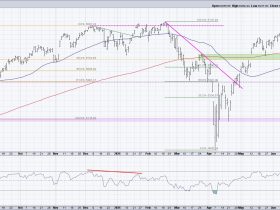Walking has always been one of the easiest, most sustainable, and beneficial ways to get exercise for folks all over the UK. Walking is a big part of everyday life in Britain, whether it’s the lovely countryside paths, city parks, coastal walks, or just getting to work.
Even though walking might appear straightforward, the shoes made to support it are far from ordinary. Best walking trainers UK have really stepped up their game lately, combining smart design elements with practical features that cater to different terrains, weather conditions, and walking styles found in the UK.
In this guide, we’ll take a look at why walking trainers are becoming increasingly important, the unique needs of the UK market, and the design features that are essential for comfort, safety, and long-term foot health.
Why Walking Trainers Matter in the UK Market
The way the UK relates to walking is quite distinct from that of many other countries. In contrast to areas where driving is the main way people get around, the UK has a rich tradition of walking that’s woven into everyday life and leisure activities. Walking is a big part of the country’s social and cultural life. Whether it’s enjoying long weekend hikes in the Lake District, taking coastal strolls in Cornwall, or just going for daily walks in cities like London, Edinburgh, or Manchester, it’s something people really cherish.
Also, the UK’s changing weather—marked by regular rain, moist conditions, and quick temperature changes—means there are particular needs for walking shoes. A walking trainer made for the UK market should work well on wet pavements, muddy paths, cobblestone streets, grassy fields, and slippery hillsides, often all during the same walk.
With so many different environments and the love for walking as a fun and fitness activity, British consumers are looking for shoes that provide versatility, durability, and comfort all day long. A good walking trainer can really change the game, turning a fun outing into a painful experience with sore feet, soggy socks, or joint discomfort.
The Difference Between Walking Trainers and Running Shoes
A lot of folks think that running shoes are good enough for walking, but walking and running actually put different kinds of stress on your feet and legs. This difference really matters in the UK market, where a lot of people tend to walk much more often and cover longer distances than they do when running.
When you run, your body feels more impact with each foot hitting the ground. That’s why running shoes need to focus on cushioning and helping you move forward. Walking, in contrast, has a more fluid heel-to-toe rolling motion, with the foot staying in contact with the ground for a longer time.
Walking trainers are designed to provide support for this specific way of walking. They usually have a bit stiffer soles that help with a smooth forward roll, plus improved arch support and better stability to keep you balanced while walking for a long time. The cushioning is usually made to provide comfort for extended periods instead of focusing on high-impact absorption, which is important for daily walkers or those who primarily exercise by walking.
Additionally, walking trainers usually highlight features that are especially beneficial for British weather—such as better grip for slippery surfaces, materials that resist the elements, and flexible uppers that accommodate foot swelling during the day.
The Importance of Traction in UK Walking Trainers
The unpredictable and often damp British weather makes traction a key design feature for walking trainers in the UK market. For walkers in the UK, slippery pavements, muddy country trails, and wet cobblestones are just part of the experience. Unfortunately, lacking good traction can easily result in some risky slips and falls.
A lot of great walking trainers come with tough rubber outsoles that have tread patterns designed for all directions. These soles are made to grip wet surfaces really well, making it easy to walk smoothly without any hiccups. Walking trainers are different from hiking boots, which often have those aggressive lugs for tackling mountain trails. Instead, walking trainers strike a nice balance between grip and flexibility, making them perfect for the mixed surfaces you find in UK cities and rural areas.
Some trainers come with special sole materials that keep their grip even in colder weather, when regular rubber tends to harden and lose its effectiveness. This keeps UK walkers steady all year long, no matter how the weather shifts.
Weather-Resistant Materials for British Conditions
In addition to traction, UK walking trainers have to handle ongoing moisture issues. With sudden rainfall, morning dew, and those unpredictable showers, it’s clear that water resistance is something many walkers really appreciate. Even though you might not need full waterproofing for a quick walk around the city, those longer hikes in the countryside or by the coast really do appreciate some moisture protection.
Manufacturers frequently apply water-repellent coatings or waterproof membranes, like Gore-Tex or their own unique technologies, to protect feet from rain and puddles while still letting moisture vapor escape. Being breathable is really important to avoid getting too hot and sweaty, which can cause discomfort or even blisters when you’re out for long walks.
The uppers, crafted from a synthetic mesh combined with protective overlays, strike a nice balance between letting air flow and keeping water out. During the colder months, using insulated linings can really help keep your feet warm while you’re out walking in winter.
For a lot of people in the UK, being able to wear walking trainers comfortably in different seasons and weather makes a big difference. It’s convenient and cuts down on the need for several pairs of shoes.
Cushioning and Support for Long-Distance Walking
The more people walk, the more important it is to have good cushioning and support—not just for their feet, but for their whole lower body too. UK walking trainers are now being made with a focus on reducing fatigue, easing joint strain, and encouraging better walking mechanics.
Lightweight EVA foam, gel inserts, or air cushioning systems in high-quality midsoles work to absorb the repetitive forces from each step, providing protection for your ankles, knees, and lower back during longer distances. This cushioning isn’t just about being soft; it’s designed to give you responsive support that helps reduce wear on your joints while still keeping things stable.
Arch support is really important too. Walkers in the UK come from all walks of life, including people of all ages. Some might deal with flat feet, overpronation, or high arches. Walking trainers usually come with built-in arch support or removable insoles, making it easy for wearers to use custom orthotics. This way, everyone gets the right alignment and pressure distribution tailored to their unique foot shape.
Heel counters provide extra stability by keeping the heel firmly in place, which helps minimize unnecessary movement that could cause blisters or strain on the ankle.
Breathability for All-Season Wear
Along with handling the rainy weather, walking trainers in the UK also need to ensure there’s enough ventilation for those warmer, drier months. While the UK isn’t exactly famous for its scorching temperatures, those warm summer days or a good walk can definitely result in some sweaty feet.
Lots of today’s walking trainers feature engineered mesh uppers that let air flow through while keeping them strong and well-structured. Breathable linings help keep moisture away from your skin, which can lower the chances of fungal infections, hot spots, or bad odors. This emphasis on climate control means that UK consumers can comfortably wear the same pair of trainers from spring all the way through autumn.
Durability for High-Mileage Use
Since walking is something a lot of folks in the UK do every day, it’s important that walking trainers are made to last. Walking often on pavements, in parks, and along countryside paths can really wear down low-quality shoes.
Top-notch walking trainers feature tough rubber outsoles that stand up to wear and tear while still providing great grip. The reinforced stitching, protective toe caps, and durable synthetic overlays keep the high-wear areas safe while ensuring the shoe stays strong and intact over time.
People who buy walking trainers usually look for shoes that can handle hundreds of miles before they need to be replaced. If you take good care of them, a solid pair of walking trainers can last for quite a while, even if you wear them every day.
The Role of Aesthetics in the Modern UK Walking Trainer Market
Functionality is still super important, but nowadays, UK walking trainers are also being made to look good. The days are over when supportive walking shoes had to look orthopedic or old-fashioned. These days, many designs look like sleek athletic trainers or trendy lifestyle sneakers, which makes them perfect for both working out and just hanging out.
People in the UK, especially those living in cities, usually look for walking trainers that can easily go from morning strolls to afternoon tasks, social gatherings, or even laid-back office environments. Neutral color palettes, minimalist designs, and stylish silhouettes let walkers focus on their health while still looking great.
Brands in the UK market understand that a lot of buyers are looking for shoes that feel great and look great too. This combination leads to more consistent use, which is really important for avoiding foot and joint issues that can come from wearing bad footwear.
Catering to a Diverse Range of Users
The UK walking trainer market really shines with its wide inclusivity, welcoming people of all ages, body types, and fitness levels. Trainers come in all sorts of sizes, widths, and arch types, making it easy for everyone—from young professionals to retirees—to find the perfect fit.
Wide-width walking trainers are designed for both men and women who have broader feet or specific medical needs like diabetes, arthritis, or edema. Adjustable closures and padded interiors make it easy to accommodate foot swelling or deformities while still keeping comfort and stability in mind.
Older adults, who might be more prone to balance problems or falls, can really benefit from walking trainers. These shoes provide extra ankle support, have non-slip soles, and are lightweight, which helps boost confidence when walking on uneven pavements or slippery surfaces.
This inclusive design approach makes sure that walking stays a lifelong activity that everyone can enjoy, reinforcing the UK’s culture of walking for both fitness and leisure.
Choosing the Right Walking Trainer: Professional Fitting Matters
Even though buying trainers online has become pretty standard, a lot of people in the UK still find it helpful to get a professional fitting when choosing walking trainers—particularly if they have special foot shapes or any medical issues.
Podiatrists, physiotherapists, and specialty shoe retailers can take a look at your gait, pressure points, and biomechanics to suggest walking trainers that focus on comfort and help prevent injuries. This tailored method can assist walkers in steering clear of typical errors, like buying trainers that are too long rather than the right width.
Well-fitted walking shoes can really help avoid pain and make walking easier, so you can enjoy longer walks without discomfort and stay safe while doing it.
Brands Leading the UK Walking Trainer Market
There are quite a few well-known footwear brands that provide top-notch walking trainers tailored to the varied needs of the UK market. Brands like Skechers, New Balance, Brooks, Asics, and HOKA ONE ONE are known for making trainers that are comfy, supportive, and built to last, perfect for strolls in the city or out in the countryside.
A lot of these brands have models that come with cool features like waterproof membranes, options for wider sizes, orthopedic inserts, and lightweight designs that really balance comfort and protection.
With competition on the rise, brands are stepping up their game by introducing new materials, focusing on sustainability, and enhancing technologies that cater to the UK’s enthusiastic walking community.
Walking Trainers as an Essential Part of UK Life
In the UK, walking isn’t just about getting fit—it’s part of everyday living. Whether you’re navigating city streets or exploring the countryside, walking trainers are essential for staying mobile, healthy, and comfortable no matter the season.
Thanks to improvements in design, materials, and functionality, today’s walking trainers offer the ideal mix of protection, versatility, and style that people in the UK are looking for. When you’re out walking in the city, tackling muddy country paths, or just getting in some daily exercise, having the right walking trainers makes sure each step feels supported, steady, and fun.
In the UK, walking trainers have become more than just another type of shoe—they’re a must-have for anyone who cares about comfort, well-being, and staying active all year round.
Read more:
Exploring Walking Trainers for the UK Market: Design and Functionality







